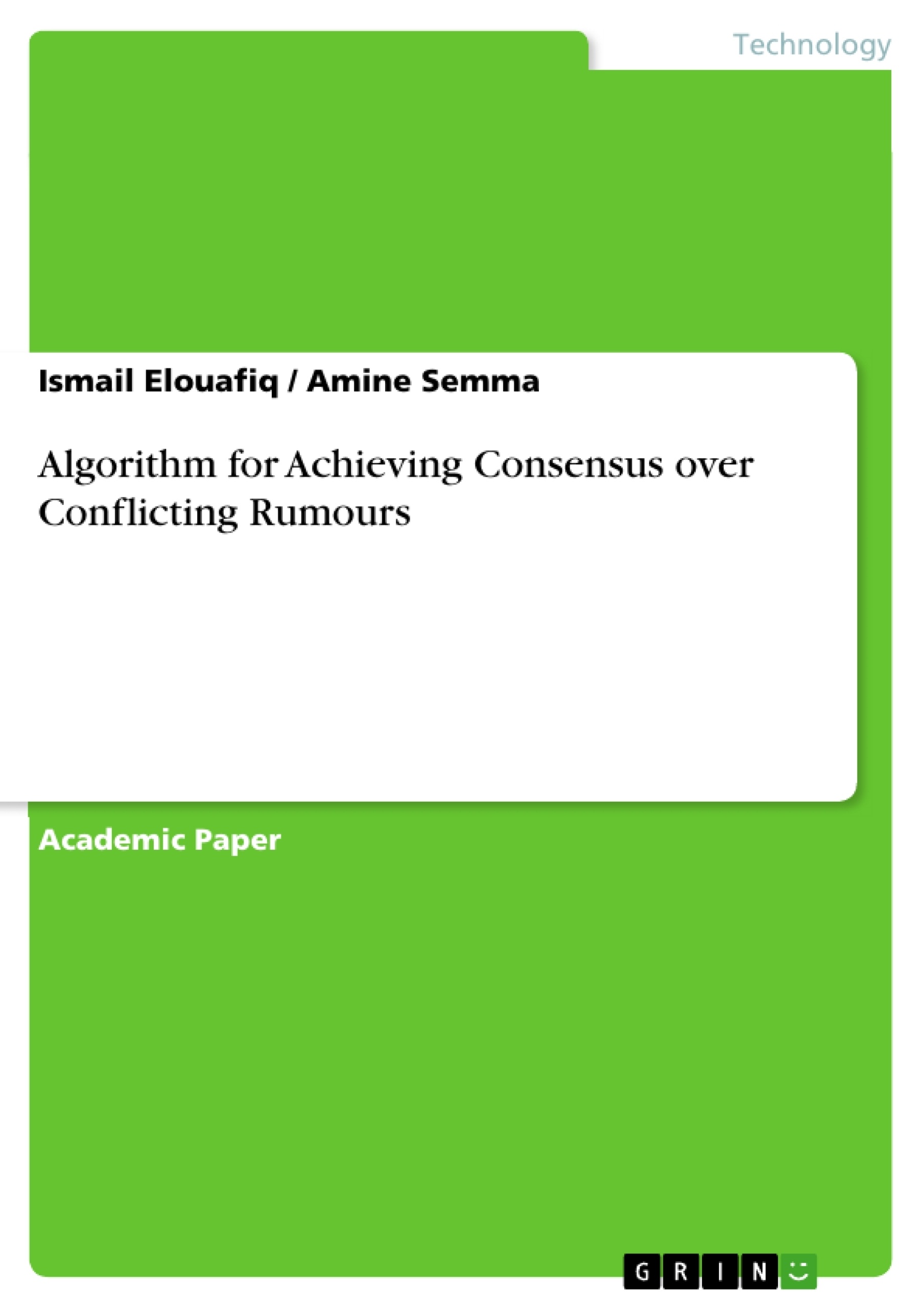Motivated by the large expansion in the study of social networks, this paper deals with the problem of multiple messages spreading over the same network using gossip algorithms. Given two messages distributed over some nodes of the graph, we first investigate the final distribution of the messages given an initial state. Then, an algorithm is presented to achieve consensus over one of the messages. Finally, a game theoretical application and an analogy with word-of-mouth marketing are outlined.
Frequently Asked Questions: Algorithm for Achieving Consensus Over Conflicting Rumors
What is the core problem addressed in this paper?
The paper explores the problem of multiple conflicting messages spreading over a social network using gossip algorithms. Specifically, it deals with the scenario where two rumors compete for acceptance within the same network.
What are gossip algorithms in the context of this paper?
Gossip algorithms are decentralized communication schemes used for information dissemination in networks. In this context, they are employed to model how rumors spread through a social network, with nodes (individuals) repeatedly contacting random neighbors to transfer their messages.
What is the main focus of the algorithm presented for two conflicting rumors?
The algorithm analyzes the final distribution of two conflicting messages (rumors) spread over a network, given an initial state. It also proposes an algorithm to achieve consensus over one of the messages. This means the goal is to have most nodes agree on which rumor is true or more believable.
How does the algorithm model the spread of rumors?
The algorithm uses a deterministic model based on the expectation of a Markov Chain. This model takes into account factors like the number of nodes holding each rumor and the rate at which nodes share information.
What are the different states a node can be in, according to the model?
Nodes can be in one of five states: 1) Has (m1) and is spreading it (m1 infective), 2) Has (m2) and is spreading it (m2 infective), 3) Has (m1) and stopped spreading it (m1 removed), 4) Has (m2) and stopped spreading it (m2 removed), and 5) Doesn't have a message (susceptible).
How does the model use Markov Chains to describe the rumor spreading process?
The spreading process is modeled as a Discrete Time Markov Chain (DTMC), where the state of the nodes at a particular time (k+1) depends only on their state at the previous time (k). This allows tracking the probability of transitions between different states of the nodes (e.g., from susceptible to infective).
What is the purpose of the consensus-based algorithm?
The consensus-based algorithm aims to get all the nodes to agree on one of the two messages. It uses counters that nodes update through interaction with neighbors, eventually leading to a situation where most nodes favor one message over the other.
What is the difference between the two counter approach and the averaging approach for consensus?
The two counter approach tracks two separate counters for each message, where the difference guides consensus. The averaging approach simplifies this by averaging a single counter across neighbors until consensus is achieved, this simpler approach is proven to be equivalent.
What are the assumptions made in deriving the deterministic model?
The assumptions are: N is approximately equal to N-1 for high N, and time intervals between Poisson clock ticks are neglected (i.e., k=t).
What is the role of the parameter 'l' in the algorithm?
The parameter 'l' represents the number of times a node will attempt to spread a message to already informed neighbors before giving up and becoming a "removed" node. This affects the reach and spread of the rumor.
How is the consensus algorithm applied to distributed voting?
In a distributed voting scenario, agents vote for one of two candidates. They use the consensus-based algorithm (averaging counters through local interaction) to converge on a choice, even if they don't have complete information about other agents' preferences. This allows them to maximize payoffs by voting for the anticipated winner.
How can gossip algorithms and these models be applied to word-of-mouth marketing?
The models can simulate how two conflicting products or ideas spread in a community through word-of-mouth. The algorithm can predict the likely winner of this "marketing battle" and identify which product or idea will dominate the conversation. Initialization values such as a higher valued counter means that this product or idea is more convincing.
What are some potential areas for future research?
Future work includes considering other types of graphs, studying the impact of node position, considering non-cooperating agents, influence from weighted graphs, and exploring the influence of various parameters.
- Arbeit zitieren
- Ismail Elouafiq (Autor:in), Amine Semma (Autor:in), 2014, Algorithm for Achieving Consensus over Conflicting Rumours, München, GRIN Verlag, https://www.grin.com/document/278179



